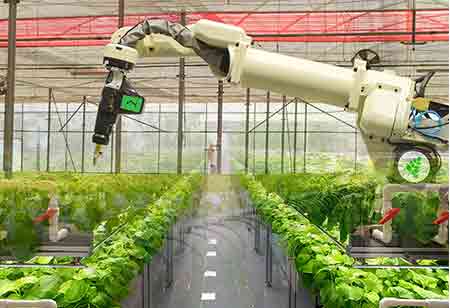

Thank you for Subscribing to Agri Business Review Weekly Brief

Indoor vertical farms require only a fraction of the space of traditional farms, making them ideal for urban settings. Their proximity to consumers minimizes transportation distances, resulting in fresher produce and reduced carbon emissions.
Amid mounting challenges such as water scarcity, land limitations, and an aging agricultural workforce, traditional farming struggles to meet escalating demands. In response, controlled environment agriculture, notably indoor vertical farming, has emerged as a viable solution. This method utilizes controlled environments, often featuring vertically stacked growing shelves, to minimize land usage. Its space efficiency makes it particularly well-suited for urban areas, with some setups even facilitating soilless plant cultivation. The advantages of indoor vertical farming are abundant: Reliable Harvests and Maximum Yield: Technological innovations enable precise control over growing conditions, including light, humidity, and water. This ensures consistent crop production year-round, regardless of weather or daylight fluctuations. Reduced Labor Costs: Amidst labor shortages in traditional agriculture, vertical farming offers automation and precise control systems, thereby reducing the dependency on manual labor. Optimized Energy Conservation: Vertical farms consume significantly less water and energy compared to conventional counterparts, with studies indicating potential reductions in water usage by up to 70 percent. Leveraging data from cameras and sensors allows farmers to fine-tune light, temperature, and humidity levels, further enhancing energy efficiency. Sustainable, Environmentally Friendly Growth: Indoor vertical farms require only a fraction of the space of traditional farms, making them ideal for urban settings. Their proximity to consumers minimizes transportation distances, resulting in fresher produce and reduced carbon emissions. Pesticide-Free Environment: The controlled indoor environment virtually eradicates pests, diminishing the need for pesticides and herbicides. This ensures the production of safer, organically grown produce for consumers. Indoor vertical farming offers a sustainable and efficient alternative to traditional methods. By addressing key challenges and promoting environmentally friendly practices, it ensures reliable food production while mitigating the impact on the environment.